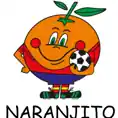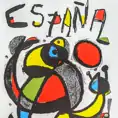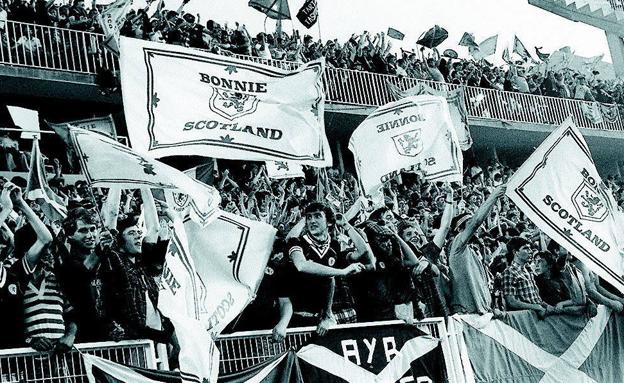Forty years have passed since Spain hosted the 12th FIFA World Cup
The country's journey to host the football tournament actually started in London in 1966
ALEKK M. SAANDERS
MALAGA.
Wednesday, 23 November 2022
The story of Spain as a World Cup host nation actually started in Great Britain. In London, on 6 July 1966, FIFA chose Spain to host the 1982 World Cup as well as awarded hosting rights for the 1974 and 1978 tournaments. It is believed that West Germany and Spain had a deal. The countries supported each other: Spain voted for West Germany for the 1974 tournament and West Germany allowed Spain to bid for the 1982 World Cup unopposed.
Controversial plays
It was record turn-out as Spain welcomed the teams that played between 13 June and 11 July. For the first time, FIFA expanded the World Cup finals from 16 to 24 teams in order to allow more countries from Africa and Asia to participate.
The United Kingdom was represented by England, Scotland and Northern Ireland. Incidentally, there was some doubt about their participation and whether to withdraw or not from the tournament. That was because of the conflict between the UK and Argentina.
By July 1982, the Falklands war was officially over but the directive (issued by the British sports minister Neil Macfarlane in April, at the start of the conflict) advising British representative teams to avoid any contact with Argentina was not rescinded until August, following the end of hostilities. It is thought that Macfarlane reported to Prime Minister Margaret Thatcher that some players and officials were uneasy about participating because of the casualties suffered by British forces, and the strong diplomatic ties between Argentina and Spain.

For the first time, FIFA expanded the World Cup finals from 16 to 24 teams. The United Kingdom was represented by England, Scotland and Northern Ireland.
Argentina had won the previous World Cup held in their country in 1978, and FIFA didn't want one of the most prominent football nations not to participate in the tournament. In the end, Robert Temple Armstrong who served as cabinet secretary under Margaret Thatcher, decided to allow the British national teams to take part, explaining that in this way Argentina could not use their absence for propaganda purposes, reversing the intended effect of applying political pressure on Argentina.
Robert Temple Armstrong, who served as cabinet secretary under Margaret Thatcher, decided to allow the British national teams to take part
Andalusian creature
The official mascot of the World Cup was Naranjito, an anthropomorphised orange, with a big grin, wearing the kit of Spain's national team and holding a ball under his left arm. Incidentally, the match ball for 1982 World Cup was manufactured by Adidas and was named the Tango España. The name Naranjito comes from 'naranja' (orange) by adding the diminutive suffix "-ito". The character represented an orange, a typical fruit of Valencia, Murcia, Seville and other Andalusian cities. He was indeed created by Andalusians.

The ntroduction of Naranjito as a mascot generated more negative comments than good, but eventually the anthropomorphised orange was accepted by more people and gained popularity
Naranjito was born on 19 August 1970 thanks to the Seville publicists María Dolores Salto and José María Martín Pacheco. So, he would have been 12 years old at the time of the World Cup. Initially the introduction of Naranjito as a mascot generated more negative comments than good, but eventually the anthropomorphised orange was accepted by more people and gained popularity.
A large number of souvenirs with his image were easily sold. Naranjito also starred in a cartoon series on Spanish television, Fútbol en Acción (Football in Action). 'The Little Orange' was accompanied by other characters - his girlfriend Clementina (Clementine), his lemon-friend Citronio and the robot named Imarchi.

The official poster called 'La Fiesta' was designed by the famous artist Joan Miró, who injected the work with his own style
A football on the flag of Spain surrounded by flags of participating nations was the logo of the 1982 World Cup. The official poster called 'La Fiesta' was designed by the famous artist Joan Miró who injected the work with his own style, primary colours, as well as a personal vision of the world and movement. Joan Miró apparently captured the aesthetic, physical and social expression of football, being aware that this would be scorned by the intelligentsia.
Numerous venues
Spain's 1982 FIFA World Cup remains the one that has used the most stadiums in a single country. To apply, the city councils in Spain had to present their candidacy to the organising committee, if they had a team in the top league. Otherwise, the cities had to have more than 200,000 inhabitants. The final choice was made on logistical criteria and that's why the island cities of Palma de Mallorca and Las Palmas de Gran Canaria were immediately excluded. Finally, 17 stadiums located in 14 cities (because Madrid, Barcelona and Seville had two stadiums each) became official venues for the World Cup.
Malaga with the La Rosaleda stadium contributed to the event along with Alicante, Bilbao, Elche, Gijón, La Coruña, Oviedo, Valencia, Valladolid, Vigo and Zaragoza. Andalucía might have been represented by two more cities, but Cadiz and Granada were rejected along with Santander, Burgos and San Sebastián.
Malaga's Rosaleda Stadium hosted three matches and two featured Scotland playing
Malaga welcomed Scotland
The matches of Group 6 were played in Andalucía. Brazil, the Soviet Union, Scotland and New Zealand faced each other in Seville and Malaga. The Rosaleda stadium hosted three matches and Scotland played in two of them. In Malaga, on 15 June, Scotland defeated New Zealand and on 22 June the team held the Soviet Union to a draw.

The match between the Soviet Union and New Zealand took place in Malaga, on 19 June and finished with a 3-0 scoreline. Scotland didn't progress in the competition after finishing third in the group, whilst England and Northern Ireland, being leaders of their groups, went to the second group stage where they were stopped by West Germany and France, respectively.
Surprisingly, Spain were eliminated in the second round much to the frustration of the football-loving country. Eventually, Italy won the 1982 World Cup final, staged in Madrid, with a 3-1 victory over West Germany. The Italians became world champions for the third time. Their triumph on Spanish soil was made memorable by the scoring feats of six-goal striker Paolo Rossi and an iconic celebration by Marco Tardelli.



Comentar es una ventaja exclusiva para registrados
¿Ya eres registrado?
Inicia sesiónNecesitas ser suscriptor para poder votar.